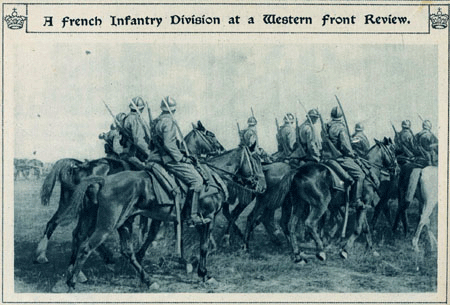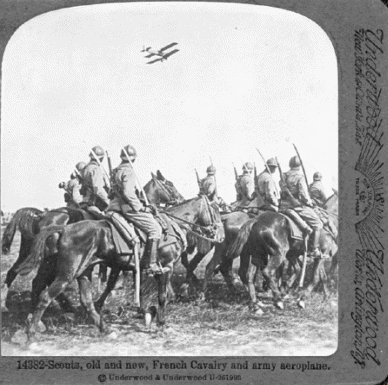 |
    |
        |

British Stereoviews
The Great War was a photographer's war, and the public avidly awaited the latest images from the front. There were several weekly photo journals and books that included photo sections, but they relied in large part upon official sources for their images. In general, places and units involved in current operations were identified in captions only vaguely to avoid giving any useful information to the enemy. No confirmed wartime stereographic sets by the two main English manufacturers are known, although Underwood & Underwood did publish during the war news photographs that were halves of stereographs. Wartime stereographs were produced in France, Germany, and the United States, so it may be that wartime British sets have only to be identified.
The British censorship effort was initiated upon the outbreak of hostilities in a rather heavy-handed manner. Soldiers were forbidden to carry cameras and journalists were placed under severe constraints, with one even threatened with execution. The War Office Press Bureau was established in August 1914, and in the same month the Defense of the Realm Act was passed, giving the government unprecedented control over reporting, as well as other aspects of civilian life. Most reporting was done by official war correspondents. Following an American complaint in 1915, controls were relaxed upon reporters, but the ban on personal cameras was rigidly enforced, unlike in the French Army. Consequently there is no large body of British private wartime stereographs comparable to that of the French. Control over censorship and propaganda was increasingly centralized as the war progressed. A Department of Information was established in February 1917, and it was elevated to ministry level in March 1918. The department/ministry had a section devoted to press articles, photographs, and movies.
The 11 July 1917 edition of The Illustrated War News, a London weekly news magazine, illustrates the British draconian approach to censorship. The magazine included an official French photograph of a divisional cavalry unit. The same image in stereographic format was purchased by Underwood & Underwood, but their copy included a biplane to make the point that traditional cavalry was being supplanted by the airplane as a means of reconnaissance. Apparently the censor cropped the image so the airplane did not appear, leaving the cavalry unit looking at some unknown object away from the camera. The caption of The Illustrated War News version leaves no doubt that excision of the airplane was intentional. The only confirmed use of the Underwood & Underwood card was after the war, but that version clearly shows an alteration during the war. It is not known if the French censors made a similar modification.
 |
 |
| The Illustrated War News, 11 July 1917, page 22: "Troops of a French infantry division are seen...being reviewed not far from the fighting line, an inspection that generally takes place, unless circumstances prevent, before troops return to the battle-line from the rest camp. Every Infantry Division has a cavalry force attached to it, at the disposal of the Commanding General. They are officially styled "Divisional Cavalry," and are distinct from the Main Army Cavalry Corps, which has "Cavalry Divisions" for independent action. |
U&U 14382 (right half)—Scouts, old and new, French cavalry and army aeroplane |
Realistic Travels of London, founded by H. D. Girdwood, produced high quality stereographs for British audiences. There were several different sets, most or all produced after the war. The primary set contained 600 views, which was sold in 100-view volumes. While Realistic Travels stereoviews are popular and command premium prices in the United States, they are not aptly named. The shots purporting to be of combat or its immediate aftermath are obviously staged, usually in training areas far from the front. The titles of identical or similar images often contain different place names, as shown by the example below. Girdwood served in the Army during the war, so he was subject to the censorship regulations.
|
|
|
|
152 (Set of 600; 63 in Set 200-2). Bosche machine gun captured and gunner taken prisoner by our advancing troops at “Plug Street” [i.e., Ploegsteert, Ypres] |
202 (Set of 600). Bosche machine gun captured and gunner taken prisoners by our “moppers up” near Croisilles [i.e., Croiselles, Arras] |
The growing American stereoview company of Underwood & Underwood established a presence in Liverpool, England about 1887, and shortly thereafter moved their English operation to 104 High Holborn, London, near Covent Garden, where it took the name Underwood & Underwood as an English firm. Underwood & Underwood photographers, including Bert Underwood himself, covered all the major worldwide conflicts and disasters around the turn of the century. They successfully covered European subjects like the Boer War, Balkan wars, and royalty, and established a sizable clientele in Great Britain and on the continent. For some years around the turn of the century, Elmer Underwood often operated out of the London office. The company sold many of its images on both sides of the Atlantic, but it also marketed some stereographs specifically to English audiences. The English branch had separate photographers and a manufacturing facility in London, hence may be considered an authentically English stereoview producer despite being a subsidiary of an American company.
After the war, George Nightingale & Co., Weston-super-Mare, Somerset, marketed 200 or more images called "The Battle-Field Series," showing battlefields in the British theater of operations a year or so after the war. The cards were unmounted images printed on photo paper and titled on the reverse. The finishing and printing was done for Nightingale by ex-servicemen at Reflex Studios, Parkstone (near Poole), a manufacturer of postcards. Nightingale stereoviews are dull in terms of content and of markedly poorer quality than Realistic or Underwood & Underwood.
There was at least one English purveyor of French glass stereoviews, few of which are known. A group of 18 45x107 slides was packaged in a box with the label "Stereoscopic Editions—The Front at Home," by the Anglo-French Photography Company, 46 New Kent Road, London. A separate group of four 45x107 glass stereoviews included one bearing the original French title with an STL marking and number. Two of the remaining views are similar to known STL views, so STL is likely to have been the source of all four. Series numbers on the four slides suggest a total set size of at least 80 and possibly many more.
 |
| I.A.18. Carso. Italian Front.
Army Stockyard.
(Original Title: 1794. Front du Carso. Parc à Bétail. S.T.L.) |
Copyright © 2007 Great War Photos. All rights reserved